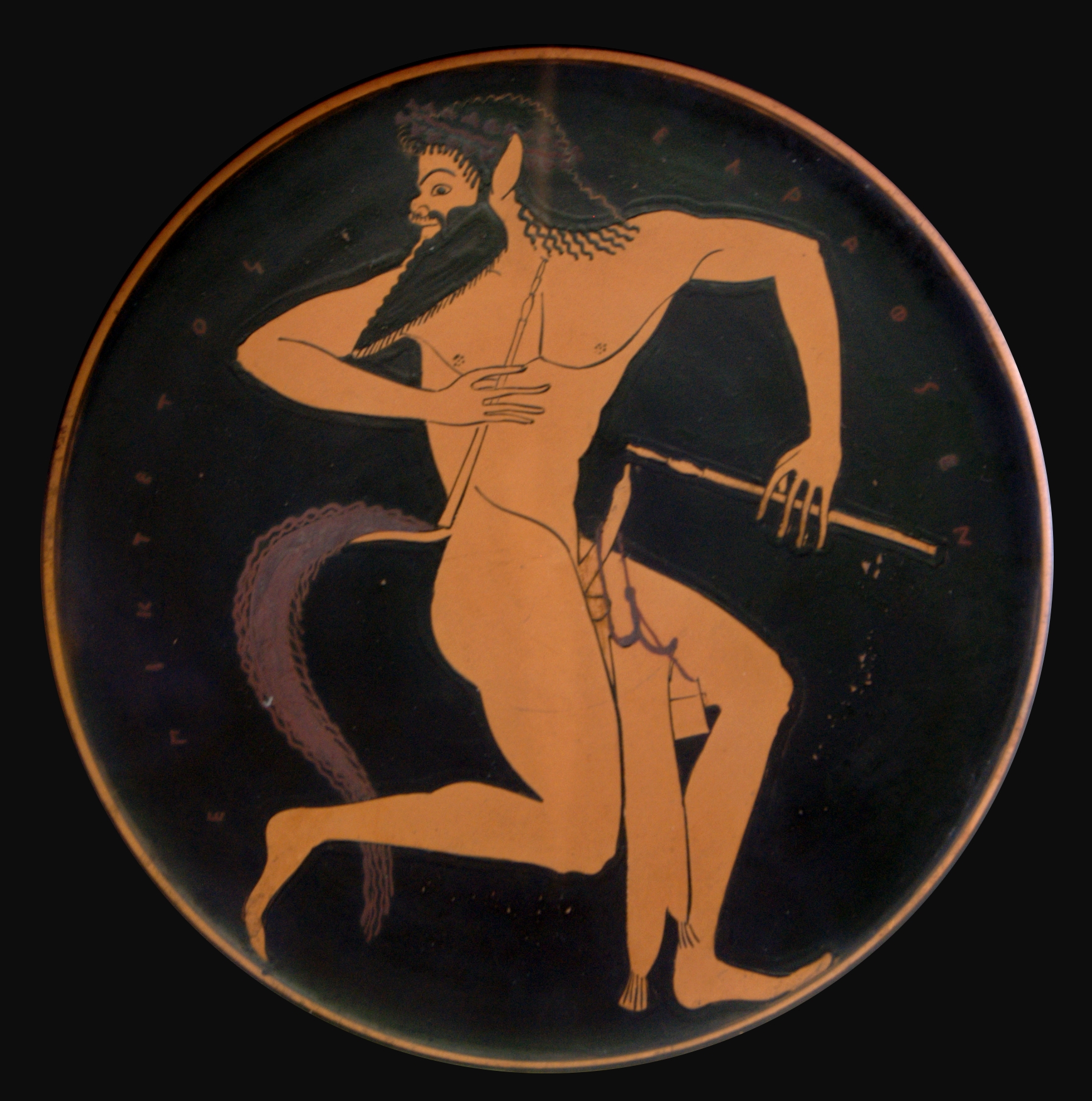The Ancient Greeks wrote an extensive amount of drama, and tragedy and comedy emerged as a form in the 6th century BC, along with mixes of tragedy and comedy such as satyr.
Ancient Greek tragedies, comedies and satyrs emerged in the 6th century BC, and were performed as part of a twice-annual festival in the city-state of Athens, as part of the festival of Dionysia, in the Theatre of Dionysus Eleuthereus. The festival of Dionysia was a celebration of the Greek god Dionysus, the god of wine and the patron of drama. The early satyrs were adapted from the dithyramb, an ancient Greek hymn sung and dance in honour of Dionysus. They were often expressed in the form of lyric verse and sang, and included a chorus of satyrs.
Satyrs were characterised as a procession of all-male companions of the gods Pan and Dionysus, and often dressed as goats. The satyrs sang their dithyrambs, and the satyr play emerged from this song. Sometimes these dithyrambs were serious in tone, written in the prosaic iambic trimeter, and were meant to accompany tragedies, but later they became briefer and sometimes burlesque in tone. These brief versions of the dithyramb were written in trochaic tetrameter and forms of satyr and comedy emerged from them as a distinct form of drama. These dithyrambs were usually improvised, and are now largely lost.
During the Golden Age of Greek drama in the 5th century BC, the satyrs, along with tragedy and comedy, emerged as a more established form of drama. At the Dionysia festival three playwrights would offer a tetralogy consisting of three tragedies and one satyr or comedy to be judged in a competition
Like tragedies, satyrs often featured the stories from Greek mythology and epics, and often contained similar elements of solemnity and stateliness. The tragic themes of heaven, fate, and the gods affecting human affairs were carried into the festivities of the satyrs. Tragic playwrights Aeschylus and Euripides were known to have written popular satyrs at the festival of Dioynsia
However, the seriousness of the tragedies were often diminished in comparison in the satyrs. Comedies and satyrs were often specifically performed to lift the spirits of the audience after the seriousness and melancholy of the trilogy of tragedies. They were short, half the duration of a tragedy, and the amusing effects of the plays often depended on the relation of the chorus of satyrs to the action of the plays.
The inclusion of both tragic and comic themes in satyrs has led to them often being described as tragicomedies.
 |
| 6th century BC drawing of a satyr with a clay pipe |
No comments:
Post a Comment